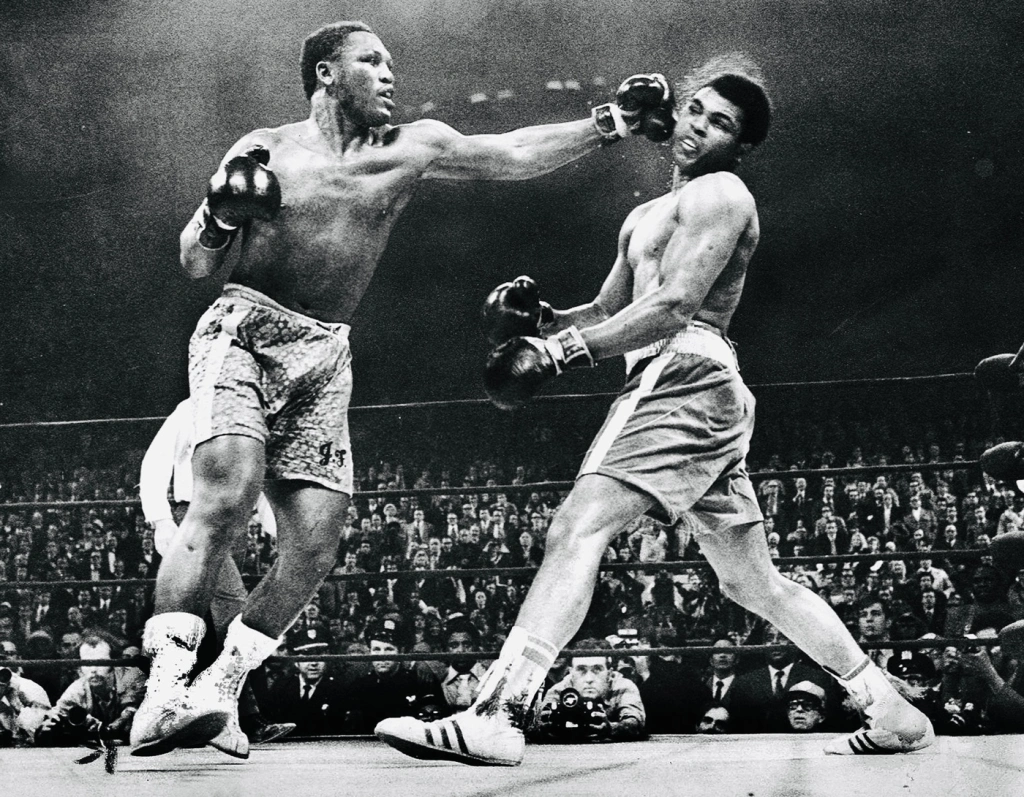By Alex P. Vidal
FORTY-eight years since it was held, the record established by Muhammad Ali and Joe Frazier in the “Thrilla in Manila” remained intact.
The biggest heavyweight boxing title fight in the world was held at the Araneta Colesium in Cubao, Quezon City on October 1, 1975.
It was a duel that defined Ali, formerly Cassius Clay, both as a sports icon and human being.
Ali (48–2, 35 KOs) settled his feud with Frazier on a spectacular 14th round TKO (technical knockout).
Frazier (32–2, 27 KOs) did not fall flat on his face.
Trainer Eddie Futch refused to let Frazier continue before the 15th round when he sensed the fight was no longer a sport.
Referee Carlos Padilla terminated the bout as Frazier protested to no avail wailing at Futch, “I want him, boss.”
“It’s all over. No one will forget what you did here today,” Futch barked at Frazier, whom Ali slandered earlier and called “ape.”
Both ring titans were exhausted and standing only on survival instinct.
Frazier’s lips had been busted and his face was crimson.
Ali also suffered a black eye in both eyes.
Ali described that third duel with Frazier as “next to death.”
The charismatic heavyweight champion admitted later that he asked Frazier to quit after 10 rounds.
“C’mon, Joe, that’s enough. There’s still life after this fight,” Ali allegedly whispered to his nemesis while they were swapping bombs.
I asked Padilla if he heard those words when I had a chance to work with him in 1996 during the 12-round WBF welterweight fisticuffs between Amerasian William Magahin and Australian Brad Moderidge.
Padilla told me he didn’t exactly hear Ali’s exact sentence, but confirmed Ali was saying something only the two boxers could understand.
As a kid, we watched the fight on a black and white TV set in Molo district, Iloilo City after our classes at the Iloilo Central Commercial High School (ICCHS) in the morning.
My other recollection of the astonishing showdown was based on the journals, magazines and newspaper clippings I had gathered.
I also watched some of the videos of the fight and interviewed some personalities involved in the epic battle here and in the United States.
Many years back, I met Sports Communicators Organization of the Philippines (SCOOP) president Eddie Alinea, who acted as Frazier’s press liaison officer, when we covered Manny Pacquiao’s fight against Joshua Clottey in Arlington, Texas.
Alinea said he was assigned by the Office of Media Affairs (now the Philippine Information Agency) to accompany Team Frazier while the boxer was in Manila.
He described challenger Frazier as “a monster in the ring but a gentleman outside.”
Ka Eddie showed to me a black and white photo of a press briefing taken at the Manila Hotel where he sat beside the behemoth champion from Louisville, Kentucky who called himself as “The Greatest” and was formerly known as Cassius Clay.
-o0o-
Ka Eddie also kept some souvenir items bearing the signature of Frazier who thanked Alinea for the Filipino scribe’s services and presence in Team Frazier.
According to many boxing experts and historians I met in the United States, the “Thrilla in Manila” was the greatest ever world heavyweight championship in history.
In terms of heated rivalry, intensity, brutality, action and courageous display of skills, talent and spirit, nothing can beat the “Thrilla in Manila.”
There have been great marquee names in the heavyweight division that emerged after Ali’s exit.
They were Trevor Berbick, Greg Page, Larry Holmes, Evander Holyfield, Riddick Bowe, Mike Tyson, to mention only a few.
But none of them could match his charisma and impact in the hearts of sports fans all over the universe.
The record established by “Thrilla in Manila” has not been broken until today.
(The author, who is now based in New York City, used to be the editor of two daily newspapers in Iloilo.—Ed)
ismatic heavyweight champion admitted later that he asked Frazier to quit after 10 rounds.
“C’mon, Joe, that’s enough. There’s still life after this fight,” Ali allegedly whispered to his nemesis while they were swapping bombs.
-o0o-
I asked Padilla if he heard those words when I had a chance to work with him in 1996 during the 12-round WBF welterweight fisticuffs between Amerasian William Magahin and Australian Brad Moderidge.
Padilla told me he didn’t exactly hear Ali’s exact sentence, but confirmed Ali was saying something only the two boxers could understand.
As a kid, we watched the fight on a black and white TV set in Molo district, Iloilo City after our classes at the Iloilo Central Commercial High School (ICCHS) in the morning.
My other recollection of the astonishing showdown was based on the journals, magazines and newspaper clippings I had gathered.
I also watched some of the videos of the fight and interviewed some personalities involved in the epic battle here and in the United States.
Many years back, I met Sports Communicators Organization of the Philippines (SCOOP) president Eddie Alinea, who acted as Frazier’s press liaison officer, when we covered Manny Pacquiao’s fight against Joshua Clottey in Arlington, Texas.
Alinea said he was assigned by the Office of Media Affairs (now the Philippine Information Agency) to accompany Team Frazier while the boxer was in Manila.
He described challenger Frazier as “a monster in the ring but a gentleman outside.”
